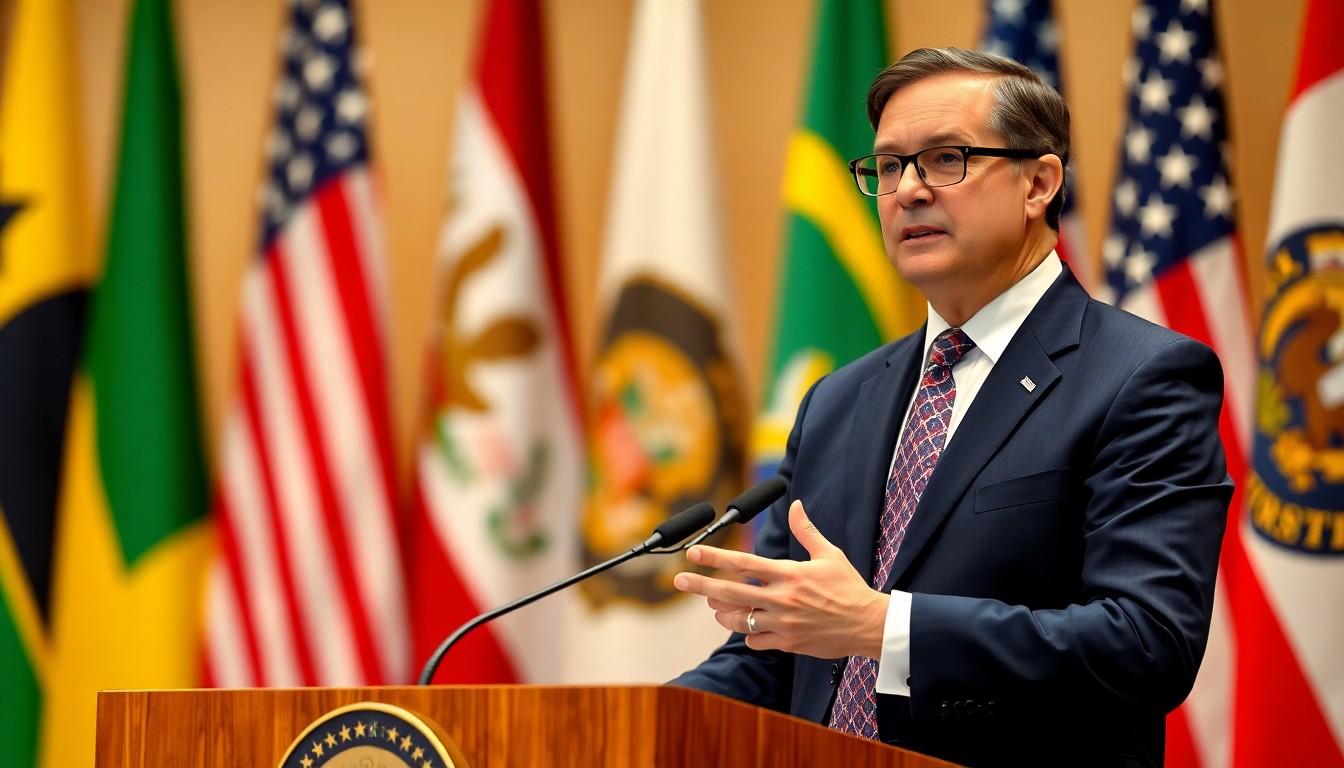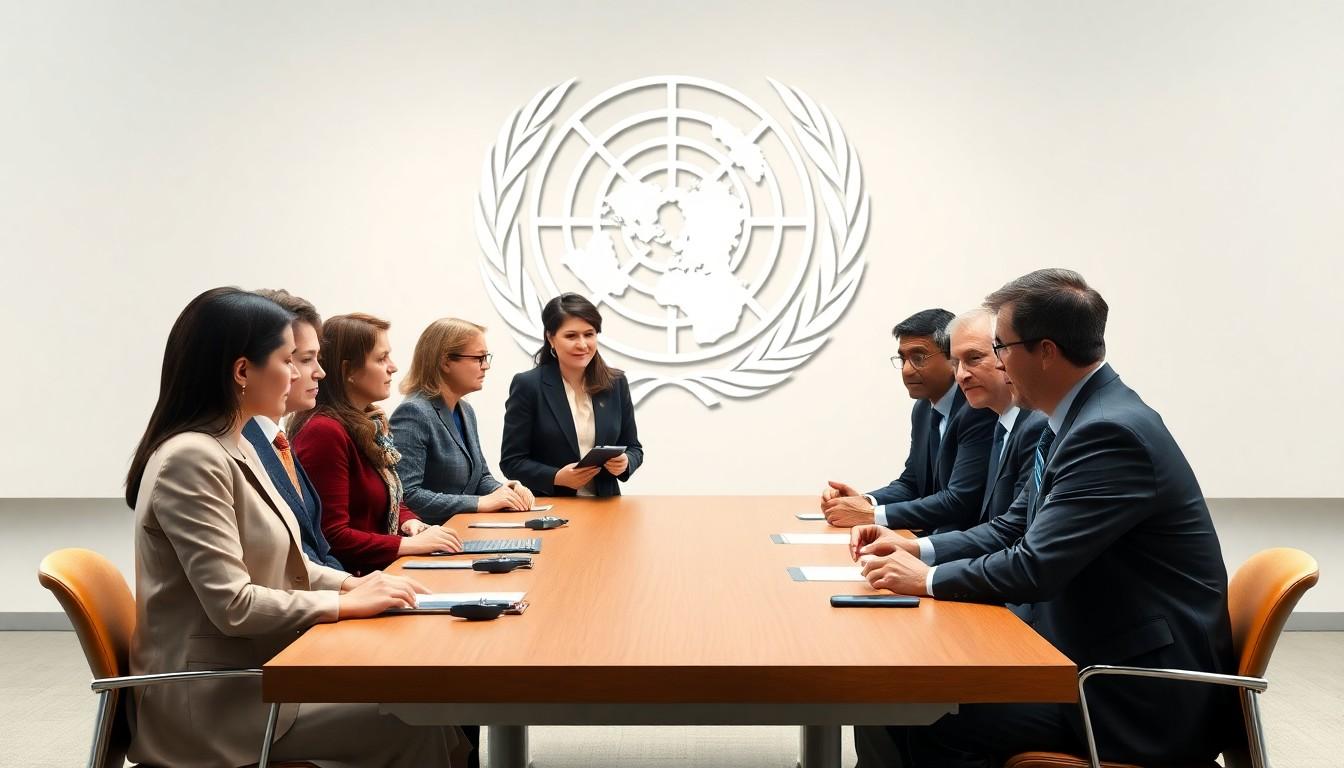The Best Fluffy Pancakes recipe you will fall in love with. Full of tips and tricks to help you make the best pancakes.

International Relations and Affairs: Navigating Global Challenges and Opportunities
In a world where borders blur faster than a magician’s disappearing act, international relations and affairs have never been more crucial. Countries are like neighbors at a block party—sometimes they share cookies, and other times they argue over the last slice of pizza. Understanding this complex dance can mean the difference between global harmony and a diplomatic disaster.
Navigating international relations isn’t just for diplomats in fancy suits; it affects everyone from local businesses to the average citizen. With geopolitical tensions rising and alliances shifting quicker than a cat on a hot tin roof, staying informed is essential. So buckle up and get ready to dive into the fascinating world of global interactions, where every handshake could lead to peace or a game of international tug-of-war.
International Relations And Affairs
International relations encompass the interactions among countries, focusing on diplomacy, conflict, trade, and cooperation. These dynamics shape global policies and influence national interests. Scholars study these patterns to understand how power and influence flow across borders.
Diplomacy plays a vital role in establishing peaceful and cooperative relationships. Nations often engage in negotiations to resolve disputes or pursue mutual interests. Conflict, however, can arise from differing ideologies, resource scarcity, or territorial disputes. This complexity creates a landscape where alliances shift frequently.
Trade agreements serve as one avenue for countries to enhance their ties. Nations engage in partnerships to improve economic conditions, reduce tariffs, and expand markets. The effects of such agreements can reach local businesses and citizens, impacting their livelihoods and growth opportunities.
Global governance is another integral aspect of international relations. Organizations like the United Nations and World Trade Organization provide platforms for dialogue and cooperation. These entities help set international norms and facilitate collaboration on global issues such as climate change and human rights.
Geopolitical factors also significantly influence international interactions. Geographic location, natural resources, and economic power shape how countries relate to one another. Understanding these factors enhances insight into current events and future trends in global affairs.
Key Theories in International Relations

International relations consists of various theoretical frameworks that explain how states interact on the global stage. Three prominent theories—realism, liberalism, and constructivism—offer distinct perspectives on these interactions.
Realism
Realism emphasizes the competitive and conflictual nature of international politics. Power plays a central role in this theory. States act primarily in their own interests, pursuing power to ensure survival. Anarchy characterizes the international system, where no overarching authority can enforce rules. Conflicts arise from competition for resources or security. Historical contexts, like World War II and the Cold War, highlight realism’s relevance. It remains influential among scholars and policymakers in understanding state behavior.
Liberalism
Liberalism presents a more optimistic view of international interactions, stressing cooperation between states. Economic interdependence often drives this collaboration. Institutions like the United Nations and World Trade Organization facilitate dialogue and promote peace. Collective security arrangements exemplify how states can work together against common threats. Democracy and human rights also play key roles in this theory. Globalization trends further reinforce liberalism’s principles, suggesting that interconnectedness may reduce conflicts over time.
Constructivism
Constructivism focuses on the social constructions that shape international relations. Ideas, beliefs, and identities influence how states perceive one another. This theory posits that state behavior is not just driven by material interests, but also by shared norms and values. Changes in identity can lead to shifts in foreign policy, as seen during the end of apartheid in South Africa. Constructivists argue that understanding these social dynamics helps explain international outcomes more comprehensively.
Major Actors in International Relations
International relations involve various key players whose interactions shape global dynamics. These major actors include nation-states, international organizations, and non-governmental organizations.
Nation-States
Nation-states serve as the primary entities in international relations. They possess sovereign power, engage in diplomatic relations, and make decisions based on national interests. Economic strength, military capabilities, and geopolitical position define their influences. For instance, the United States and China wield significant power due to their economic and military prominence. Nation-states often enter treaties and alliances to enhance security and economic cooperation. Conflicts frequently arise from competing national interests, highlighting the complexities in their interactions.
International Organizations
International organizations play a crucial role in facilitating dialogue and cooperation among states. Institutions such as the United Nations and World Trade Organization provide platforms for negotiation and dispute resolution. They promote peace, security, and economic development on a global scale. Membership in these organizations can enhance a nation’s diplomatic leverage. For example, countries often collaborate on issues like climate change, trade, and human rights through these platforms. International organizations foster multilateral approaches, enabling collective responses to global challenges.
Non-Governmental Organizations
Non-governmental organizations contribute significantly to international relations by advocating for various causes and influencing policy. These organizations address issues such as human rights, environmental protection, and public health. They operate independently from governments, allowing them to mobilize resources and create awareness. For instance, organizations like Amnesty International and Greenpeace drive global conversations and campaigns on pressing issues. Their ability to engage the public and raise funds enhances their impact in influencing policymakers. Non-governmental organizations play a vital role in shaping the global agenda and supporting marginalized voices.
Current Trends in International Affairs
International affairs continuously evolve, shaped by various pressing issues. Key trends include globalization, climate change, and geopolitical conflicts.
Globalization
Globalization facilitates deeper economic interconnections among nations. Countries increasingly rely on trade agreements and collaborative ventures to thrive economically. Emerging markets are transforming global trade patterns, leading to shifts in supply chains. Diverse cultures influence international relations as businesses expand their operations overseas. Technological advancements enhance communication, making it easier for entities to engage across borders. Increased migration fosters cultural exchanges, affecting domestic policies. Organizations must adapt to these developments to remain competitive in a global marketplace.
Climate Change
Climate change poses significant challenges that transcend national borders. Countries now confront the urgent need for collective action to address environmental crises. International agreements, like the Paris Accord, emphasize collaborative efforts to reduce carbon emissions. Adaptation strategies are critical for vulnerable nations coping with rising sea levels and extreme weather. Environmental advocacy transcends borders, inspiring grassroots movements around the globe. Public awareness campaigns educate citizens about sustainability practices and their importance. This trend highlights the interconnectedness of nations in facing a shared existential threat.
Geopolitical Conflicts
Geopolitical conflicts arise from competing national interests and territorial disputes. Regions like Eastern Europe and the South China Sea illustrate ongoing tensions among powerful nations. Alliances and partnerships shift as countries reassess strategic priorities. Diplomatic solutions are critical in mitigating risks associated with conflicts. Sanctions and diplomatic negotiations become essential tools for influencing adversaries. The role of international organizations remains integral in de-escalating conflicts and promoting dialogue. Understanding these dynamics is crucial for anticipating the implications of geopolitical instability on global relations.
The landscape of international relations is ever-evolving and profoundly impacts lives across the globe. As nations navigate complex interdependencies and conflicts, the need for effective diplomacy and collaboration becomes increasingly critical. Understanding these dynamics not only enriches individual perspectives but also fosters a more informed society.
By engaging with the theories and actors that shape global interactions, individuals can better grasp the implications of current events. This awareness equips them to participate in discussions about international affairs and advocate for policies that promote peace and cooperation. Ultimately, the future of international relations hinges on the collective efforts of nations and their citizens to address pressing global challenges.
